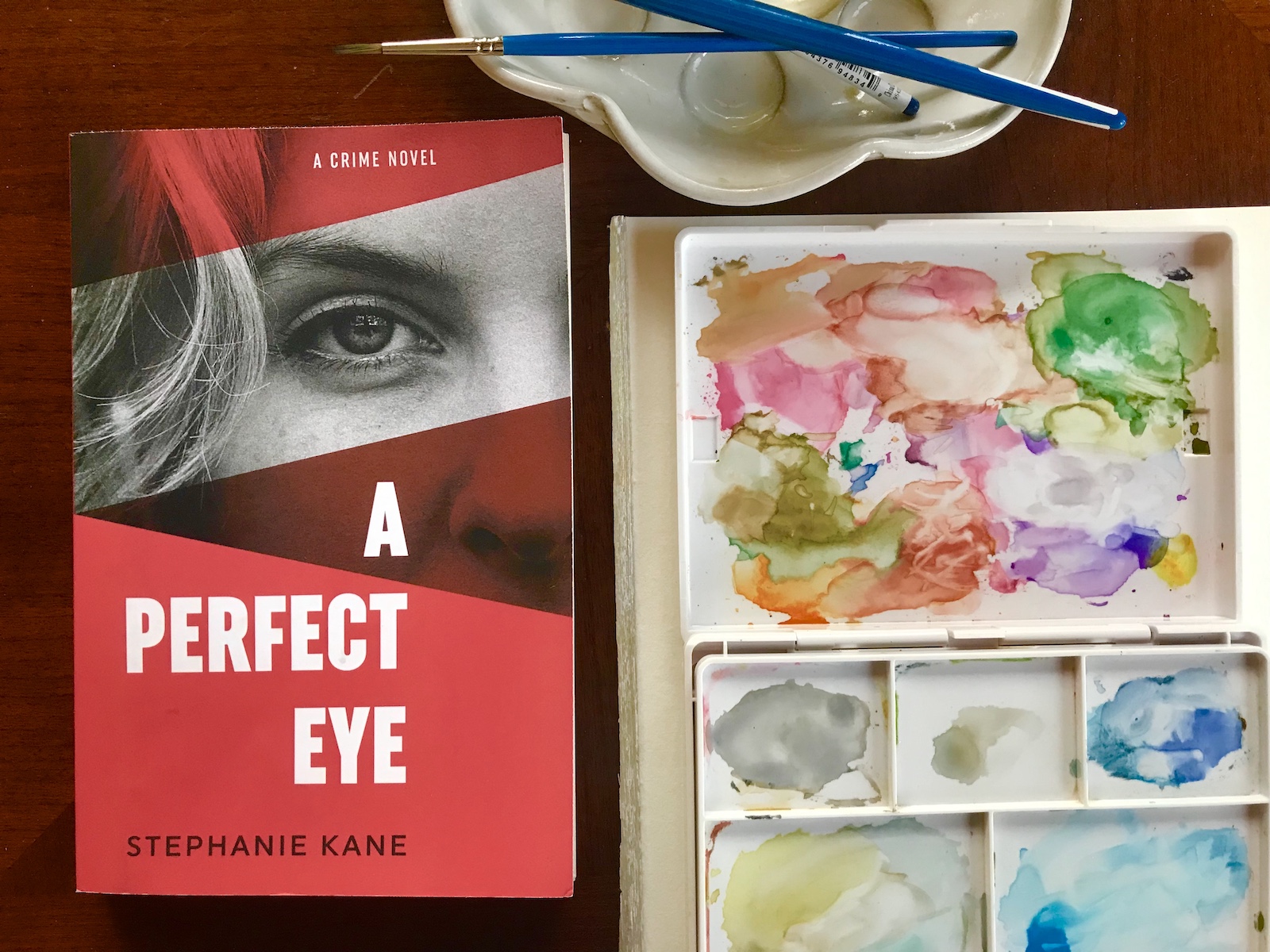The Local newsletter is your free, daily guide to life in Colorado. For locals, by locals.
When young Brooklynite Stephanie Kane moved to Boulder in 1971, she had no idea that she was about to encounter a murder case that would paralyze her marriage (and alter the course of her career as a writer) before it even began.
On August 8 this year, Kane sits in her Hilltop dining room. Now remarried to federal judge John Kane, she’s since traded her erratic-but-impressive law career for life as a fiction writer. Her latest, A Perfect Eye (now available from Cold Hard Press), rests on the table runner between us. We’re talking about art and truth, the primary themes that wrestle her protagonist, Lily Sparks, the conservator of paintings at the Denver Art Museum, into a murder mystery. One of the museum’s rich benefactors is killed in a ruthless scene of blood and gore, set up by the murderer, oddly enough, to evoke what Lily believes to be a landscape by the Impressionist Gustave Caillebotte.


But less than 15 minutes into our conversation, before we can even mention Lily or Caillebotte, Kane tells me something that wrenches the interview away from the book: In 1973, her fiance’s mother was beaten to death in her garage.
Unflinching, she skims over no detail. She folds her arms over the table and stares me down, unloading the rest of the story.
Kane and Doug (Kane’s fiance at the time) decided to go ahead with their engagement. But in the midst of their wedding preparations, Doug’s father was indicted for the murder. Defense lawyers finagled a case; the charges against him were dropped. But, reflecting now, Kane thinks the crime cast a pall over her young marriage, creating an unspoken but eventually insurmountable barrier.
Time passed with little to no discussion of the murder, and after nine years, Kane and Doug divorced. She’d since earned a law degree, and after the split dumped her with debt, she started working at a large downtown law firm on 17th Street in Denver. She eventually became a criminal defense lawyer, and met her second husband, judge John Kane. He was not so satisfied leaving the murder in the past.
Spurred on by her spouse, Kane traveled back to Arapahoe County, sat down with the district attorney, and pored over the courthouse files. She had no plans, initially, of writing a book—she’d never attempted fiction before—but there was something alluring about fictionalizing a moment in time that had tormented her for decades. So, at her publisher’s prompting, she scrubbed her drafts for any identifying detail that could be matched to her ex-husband’s family, and she published the book with Bantam as Quiet Time.
At first, things were quiet. Kane went on to write and sell a few other legal thrillers, and she felt like she’d put the mystery to rest. But in 2005, she got an email and phone call from a cold case detective who said he had information about the murder.
Kane’s former husband had an aunt who had seen a rerun of an author interview with Kane on late-night local TV. She’d bought Quiet Time, and after reading it, she came forward to tell police that, in the mid-’90s, Kane’s former father-in-law had told his mother he murdered his wife. His mother then shared the confession with his sister, who kept the secret for about a decade before informing police.
The details of the case are documented extensively on Kane’s blog, and several existing Denver Post articles track the years-long drama. The case spent eight years in legal limbo, stuck in pre-trial proceedings and traveling up and down the Colorado appellate system.
Kane’s former father-in-law died by suicide in 2013; he was never convicted, though today the case is considered solved by Arapahoe County. Her mind muddled, Kane tried to turn the story into a true-crime book, but it wasn’t a celebrity story, so publishers were skittish. Kane was almost relieved it didn’t sell; she hadn’t found the right way to tell it. It was “just dead,” she describes. The book had no strength.
“The true-crime novel’s failure made me want to go back to fiction,” she says. “It made me really appreciate the freedom of making stuff up that means something, that resonates. And I went back and invented a new character, and I wrote A Perfect Eye.”
Back at her Hilltop home, Kane launches into a tirade about art forgery. Because, on the surface, that’s what A Perfect Eye explores: A middle-aged art forger creates a Caillebotte fake that hangs in the Denver Art Museum, and when the museum’s benefactor fails to recognize the forger how he sees fit, his answer is murder. The protagonist, Lily, uses her sharp observation skills to reveal the painting and its creator are frauds. The book is fast-paced and plot heavy, stuffed with art and law jargon that makes the dialogue crisp but a little unwieldy. Reading A Perfect Eye is like watching the popular HBO series Billions—the characters are so much smarter than you, you rarely understand what they’re saying. Enthralled, you listen anyway.
Yet there’s more Kane is trying to answer with this book. She’s trying to get inside the heads of con artists. She’s trying to understand the making of a lie, and whether it matters. How important is truth?
It isn’t hard to see that, despite its grounding in the art world, this book is yet another grappling with Kane’s past. Like Lily tracking down the forger to the book’s final, simmering climax, Kane is still seeing shades of gray, still processing what was true, what was staged, what went wrong.
And like Lily, Kane is no longer comfortable with lies.
If you go: Stephanie Kane will speak and sign copies of A Perfect Eye at Tattered Cover LoDo, 1628 16th St., on September 5 at 7 p.m.








